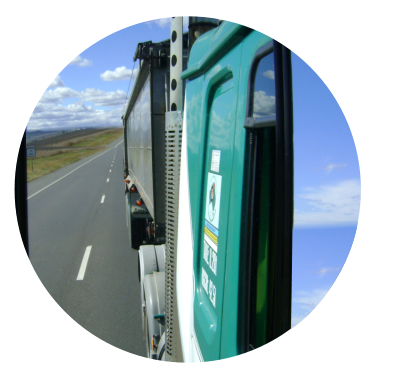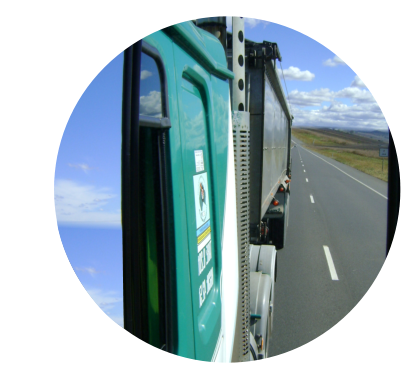(Hover over the different blind spots to view more information)
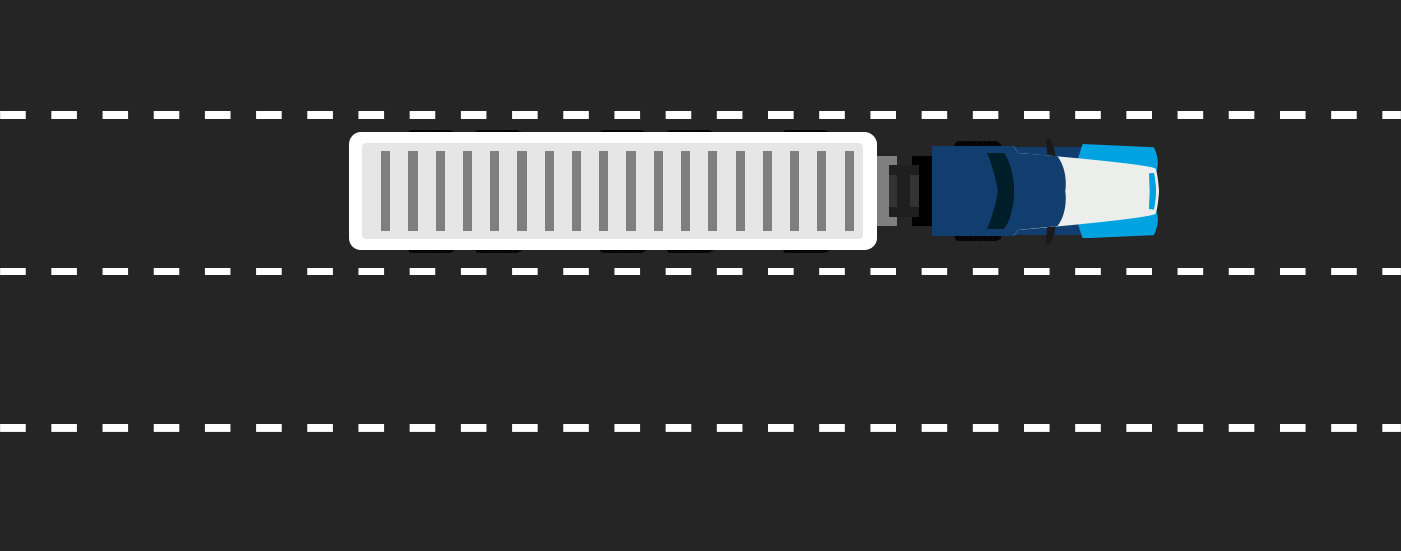

Rear 30 Feet Blind Spot
Left 1 Lane Blind Spot
Right 2 Lanes Blind Spot
Front 20 Feet Blind Spot

What Are Blind Spots?
Every motor vehicle has blind spots, which are areas in which the driver has limited or no visibility.
In most vehicles, rear and side-view mirrors are standard equipment that keep drivers safer by minimizing the number and size of their blind spots. In newer vehicles, backup cameras and electronic sensors improve visibility further by reducing the size of any potential blind spots.
While large commercial trucks have much of the same equipment as smaller passenger vehicles, mirrors and sensors tend to be less effective in minimizing a truck’s blind spots. This is because a truck’s blind spots are significantly larger than the blind spots of an average passenger car.
In addition, the massive size of a large truck makes it impossible for drivers to see all areas of the road surrounding their cabs. Some trucks lack rearview mirrors or enhanced technology to help increase their ranges of visibility. It’s no surprise that these rigs are particularly vulnerable to being involved in blind spot truck accidents.
Some 18-wheelers are equipped with extended side-view mirrors, exterior cameras, and blind spot sensors that reduce the impact of a truck’s blind spots. However, depending on the size, shape, and safety features of a given truck, its blind spots may extend along the entire length of the truck and span one or more lanes of adjacent traffic.

Depending on the way a tractor trailer is designed, its front blind spot can extend as far as 20 feet in front of the truck’s cab. Truckers sit much higher off the road than…
Depending on the way a tractor trailer is designed, its front blind spot can extend as far as 20 feet in front of the truck’s cab. Truckers sit much higher off the road than most other drivers. In addition, many commercial truck cabs have large “noses” in the front that house their engines. As a result, truck drivers are situated at an angle that makes it virtually impossible to see the road immediately in front of them.
Because truckers’ front-end blind spots are so large, they have a duty to avoid tailgating other vehicles. Similarly, other drivers must respect and remember to take the front No Zone into account. Driving too close to the front of a truck — or even worse, cutting off a large truck in traffic— is extremely dangerous. This is because large trucks take about 40% longer to stop than standard passenger cars. The entire front No Zone can extend as much as 10 car lengths from the front of a truck’s cab.
When car drivers cut off large trucks in traffic or linger within front No Zones, they are at considerable risk for rear-end, T-bone, and head-on collisions. According to an analysis from the National Highway Traffic Safety Administration (NHTSA):
- 64% of all fatal crashes between large trucks and other vehicles over a yearlong period involved impacts with the front end of a truck.
- 31% of fatal front-end impact truck crashes during that time were head-on collisions. Another 26% involved the front end of a truck striking the right or left side of another vehicle. 6% involved the front end of a truck colliding with the rear end of another vehicle.
In a separate study, NHTSA found that:
- During a four-year period, 59% of truck accidents that resulted in fatalities or incapacitating injuries involved front-end truck impact points.
Front No-Zone
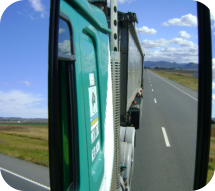
Just like the right side of a large truck, a truck’s left side has a substantial blind spot area. Left- side blind spots, however, are slightly smaller than right blind spots because truck drivers sit on the left side…
Just like the right side of a large truck, a truck’s left side has a substantial blind spot area. Left- side blind spots, however, are slightly smaller than right blind spots because truck drivers sit on the left side of their trucks.
The left No Zone on a truck begins immediately behind the left-hand side of a truck’s cab and extends back at an angle to cover as many as two lanes of traffic.
Motorists should take care to avoid driving in neighboring left lanes. A good rule of thumb is to ensure that the mirrors of a large truck are visible at all times. Passing a semi-truck on the left side is much safer than passing on the right, but it’s still a good idea to do so quickly to avoid the truck’s left-side No Zone.
When truck operators fail to check their left No Zones for other drivers before merging or turning, they are much more likely to cause serious side-impact, rollover, and underride accidents. According to the NHTSA studies cited above:
- 11% of all fatal accidents between large trucks and other vehicles involved impact points on the left-hand side of a truck.
- 9% of all fatal truck crashes occurred when the front end of another vehicle collided with a left-side impact point on the truck in a T-bone collision.
- Another 9% of all fatal truck crashes were the result of another vehicle sideswiping a left-side impact point on the truck.
- Around 13% of fatal truck accidents that resulted in fatalities or incapacitating injuries involved left-side truck impact points.
Left-Side No Zone
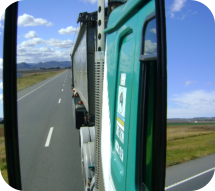
The right side no-zone of an 18-wheeler contains one of a large truck’s biggest blind spots, which begins just behind the right-hand side of a truck’s cab. This blind spot extends…
The right side no-zone of an 18-wheeler contains one of a large truck’s biggest blind spots, which begins just behind the right-hand side of a truck’s cab. This blind spot extends back at an angle away from the side of a truck’s trailer, sometimes spanning as many as three lanes of right-hand traffic.
When drivers are situated on the right-hand side of a large truck, it can be difficult to tell exactly where the No Zone begins and ends. One of the most reliable ways of telling whether you’re in a semi truck’s right-side No Zone is to keep an eye on the truck’s mirrors. If you’re unable to see a truck’s side-view mirrors, or if the mirrors are in view but you can’t actually see the driver, you are in the No Zone and should relocate as quickly as possible.
Motorists who drive too closely to a truck’s right-hand side, pass a truck on the right, or linger in the No Zone are more likely to be involved in T-bone, sideswipe, rollover, and underride truck accidents. Reports from NHTSA suggest:
- 5% of all fatal crashes between large trucks and other vehicles in a single year involved impact points on the right-hand side of a truck.
- In nearly all of these fatal crashes, the front end of the other vehicle collided with the right-hand side of the truck in a T-bone or underride collision.
- Over a four-year period, 4.9% of fatal truck accidents that resulted in fatalities or incapacitating injuries involved right-side truck impact points.
Right-Side No Zone

A large truck’s rear No Zone is located immediately behind the truck’s trailer or any other cargo the truck is hauling. Because there is no rearview mirror in a semi-truck’s cab, the rear blind spot extends as far…
A large truck’s rear No Zone is located immediately behind the truck’s trailer or any other cargo the truck is hauling. Because there is no rearview mirror in a semi-truck’s cab, the rear blind spot extends as far as 30 feet behind the back end of a trailer. This means that truck drivers have no way of seeing just behind them and can’t always tell whether someone is following too closely.
Other motorists should never tailgate any vehicle, especially commercial trucks. Doing so prevents them from seeing the road ahead, but it also prevents truck drivers from seeing their vehicle. If the flow of traffic forces truck drivers to slow or stop suddenly, tailgating drivers within the back No Zone can ram right into the rear end of the truck. Statistics published by NHTSA reveal that:
- 19% of all fatal accidents between large trucks and other vehicles in a single year involved impact points on the rear end of the trucks.
- In the majority of these fatal rear-end truck accidents, the front end of another vehicle collided with the rear end of the truck.
- Nearly 13% of truck accidents that resulted in fatalities or incapacitating injuries involved rear-end truck impact points.
Rear No Zone
Truck Driver's Perspective


(Hover over the front windshield and mirrors to view more information)
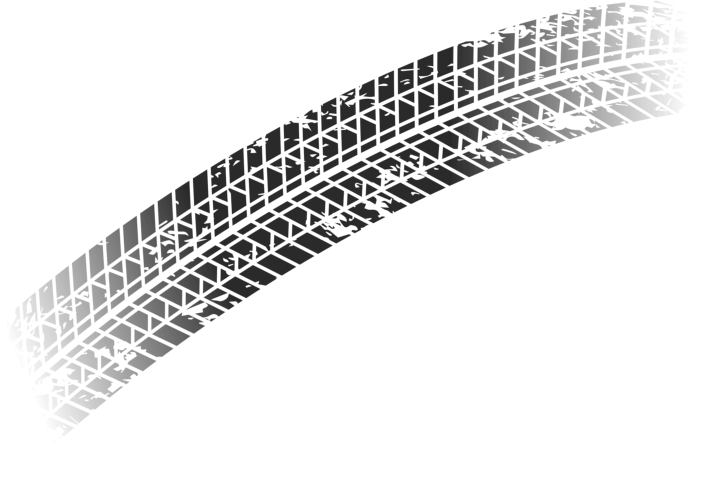
Right-Side No Zone
The right side no-zone of an 18-wheeler contains one of a large truck’s biggest blind spots, which begins just behind the right-hand side of a truck’s cab. This blind spot extends back at an angle away from the side of a truck’s trailer, sometimes spanning as many as three lanes of right-hand traffic.
Learn More ›Left-Side No Zone
Just like the right side of a large truck, a truck’s left side has a substantial blind spot area. Left-side blind spots, however, are slightly smaller than right blind spots because truck drivers sit on the left side of their trucks.
The left No Zone on a truck begins immediately behind the left-hand side of a truck’s cab and extends back at an angle to cover as many as two lanes of traffic.
Motorists should take care to avoid driving in neighboring left lanes. A good rule of thumb is to ensure that the mirrors of a large truck are visible at all times. Passing a semi-truck on the left side is much safer than passing on the right, but it’s still a good idea to do so quickly to avoid the truck’s left-side No-Zone.
When truck operators fail to check their left No-Zones for other drivers before merging or turning, they are much more likely to cause serious side-impact, rollover, and underride accidents. According to the NHTSA studies cited above:
- 11 percent of all fatal accidents between large trucks and other vehicles involved impact points on the left-hand side of a truck.
- Nine percent of all fatal truck crashes occurred when the front end of another vehicle collided with a left-side impact point on the truck in a T-bone collision.
- Another nine percent of all fatal truck crashes were the result of another vehicle sideswiping a left-side impact point on the truck.
- Around 13 percent of fatal truck accidents that resulted in fatalities or incapacitating injuries involved left-side truck impact points.
Rear No Zone
A large truck’s rear No-Zone is located immediately behind the truck’s trailer or any other cargo the truck is hauling. Because there is no rearview mirror in a semi-truck cab, the rear blind spot extends as far as 30 feet behind the back end of a trailer. This means that truck drivers have no way of seeing just behind them and can’t always tell whether someone is following too closely.
Because there is no rearview mirror in a semi-truck cab, the rear blind spot extends as far as 30 feet behind the back end of a trailer. This means that truck drivers have no way of seeing just behind them and can’t always tell whether someone is following too closely.
Other motorists should never tailgate any vehicle, especially commercial trucks. Doing so prevents them from seeing the road ahead, but it also prevents truck drivers from seeing their vehicle. If the flow of traffic forces truck drivers to slow or stop suddenly, tailgating drivers within the back No-Zone can ram right into the rear end of the truck. Statistics published by NHTSA reveal that:
- 19 percent of all fatal accidents between large trucks and other vehicles in a single year involved impact points on the rear end of the trucks.
- In the majority of these fatal rear-end truck accidents, the front end of another vehicle collided with the rear end of the truck.
- Nearly 13 percent of truck accidents that resulted in fatalities or incapacitating injuries involved rear-end truck impact points.

Who Is Liable for a Blind Spot Truck Accident?
Before truck drivers obtain their Commercial Drivers’ Licenses (CDLs), they are required to undergo rigorous testing and training to make sure they know how to operate trucks safely. By the time truckers take their CDL tests, they should understand how to avoid foreseeable risks on the road, including those presented by their trucks’ blind spots. Even more than other vehicle drivers, truck drivers must take special precautions to avoid blind spot accidents because large commercial trucks can cause so much more damage than average passenger cars in a collision.

When truck drivers fail to pay attention to their blind spots, they may be held liable for any blind spot accidents that occur. Since many truck wrecks cause severe or even fatal injuries, it’s common for accident victims or their families in Florida to sue truck drivers for negligence in serious personal injury or wrongful death claims.
Although truck drivers may be held responsible for causing blind spot accidents, there are other parties who may also share part of the blame. For example, if a trucking company knowingly hires truck drivers who are unqualified or lack proper experience, they may be considered liable for any blind spot accidents their employees cause.
Determining who is liable in a blind spot truck accident can be tricky, and proving liability in these cases is often even more difficult. The assistance of a knowledgeable truck accident attorney can help you hold the appropriate party responsible and secure the compensation you need to recover.
What Causes Blind Spot Accidents
?
Blind spot accidents may be caused by a variety of factors. The majority happen due to driver negligence. Some of the most common causes of blind spot truck accidents in Florida include:
Aggressive Driving
Distracted Driving
Driving Intoxicated
Drowsy Driving
Inexperienced Driver
How to Avoid Semi-Truck Blind Spot Accidents in Tampa
Semi-truck accidents can affect even the most careful drivers. Take these precautions to reduce your risk of being involved in a blind spot truck accident:
Make sure truck drivers have every opportunity to see you by keeping their side-view mirrors within sight at all times.
-
Give trucks in front of you plenty of space to avoid ending up in their rear-end blind spots.
-
If you need to merge in front of a large truck in traffic, avoid cutting in too closely to steer clear of its front No-Zone.
Avoid passing on the right.
When you do pass a large truck on the road, do so as quickly and safely as possible.
If you notice truck operators driving recklessly, report them to their company hotlines, or to local authorities to keep your community safe.
If you’ve been injured in a Florida blind spot truck accident, the skilled Tampa attorneys at Brooks Law Group can help you pursue the financial compensation you need while you focus on your recovery. Contact us today for a free, confidential case review to learn your legal options.




